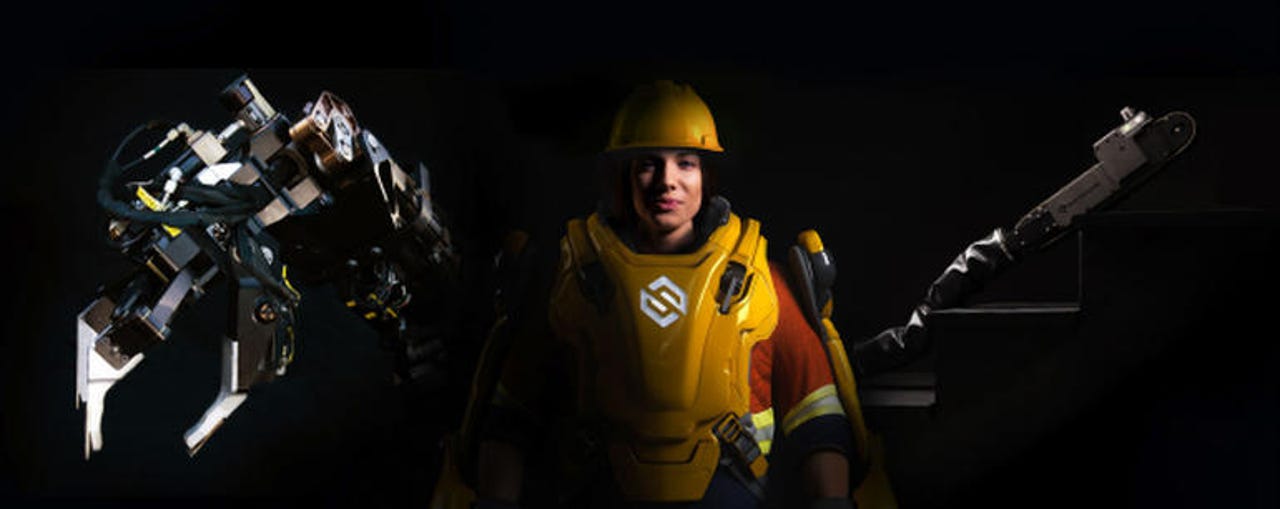Hardhat required: A full-body, industrial robot that's nearly ready for the job site


Salt Lake City-based Sarcos Robotics, which makes robots that augment human capabilities in industries like construction, public safety, and the military, is on track to release a commercial version of its massively powerful full-body exoskeleton suit late next year. The company's Guardian XO Max is battery-powered and all-electric, a departure from the diesel-powered industrial equipment it may soon replace.
Also: 5 things to know about soft robotics TechRepublic
When I learned this huge robot could operate on a battery charge about as long as my laptop, my interest was definitely piqued.
The suit enables average people to lift and manipulate loads up to 200 pounds. For many years, the weight and capacity of batteries has limited the potential for an untethered, all-electric industrial suit. But Sarcos engineers seem confident they've cracked that nut with novel control and power consumption techniques.
"There are many misperceptions regarding the commercial readiness and viability of full-body industrial exoskeletons that are capable of substantially increasing human strength and endurance, including the amount of power required to operate these machines," said Ben Wolff, chairman and CEO, Sarcos Robotics. "With our innovations in optimizing power utilization, Sarcos has been able to do what no other robotics company in the world has been able to do with powered exoskeletons or humanoid robots--power a human-scale robot doing meaningful work for up to eight hours on a single charge."
Though Sarcos hasn't revealed the inner-workings of its power consumption architecture, my guess is that the secret sauce is passivity. That is, the robot, if I'm correct, is passive when not in motion.
To understand the engineering concept, consider the human skeletal system, which transfers the load of the body to the floor very efficiently when we stand still. On two feet, with knees and hips locked, we burn exceptionally little energy. Most industrial robots, by contrast, engage actuators and use massive amounts of energy just to stand in place.
With the battery life and corresponding energy consumption Sarcos is citing, I'm pretty certain the company's engineers have figured out how to lock the robot's actuated joints whenever they aren't actively engaged, transferring the weight of the device passively to the ground and conserving the battery for useful work.
Also: Misty the adorable robot just wants to be your friend CNET
As a result, this huge robot is sort of like a mutant sibling of the Energizer Bunny.
Among the industries Sarcos hopes to disrupt, construction is most primed for a massive technological transformation. The industry currently relies on technology that hasn't changed all that much in the last hundred years. But automation, including robots and drones, as well as IoT tools that enable site managers to collect massive amounts of data, are overhauling the industry in short order.
Sarcos has been diligently positioning itself as the Caterpillar of human augmentation robots, a vision Caterpillar evidently shares. The construction giant made a strategic investment in Sarcos a few years back.
All of which suggests we could be seeing these robotic suits on construction sites in short order. Sarcos estimates it will commercially release the suits in late 2019 and shipments to customers will commence in early 2020.
Beep Boop Bop: A brief history of robots, Part I
Previous and related coverage:
Robotics in business: Everything humans need to know
An executive guide to the technology and market drivers behind the $135 billion roboticsmarket.
Living Machines: A quick history of robots (Part I)
Wanted: Robot life coach (no, really)
The unique job is a hint of what's to come as robots increasingly join us in the human world
Gorgeous robots made of high tech paper are mesmerizing